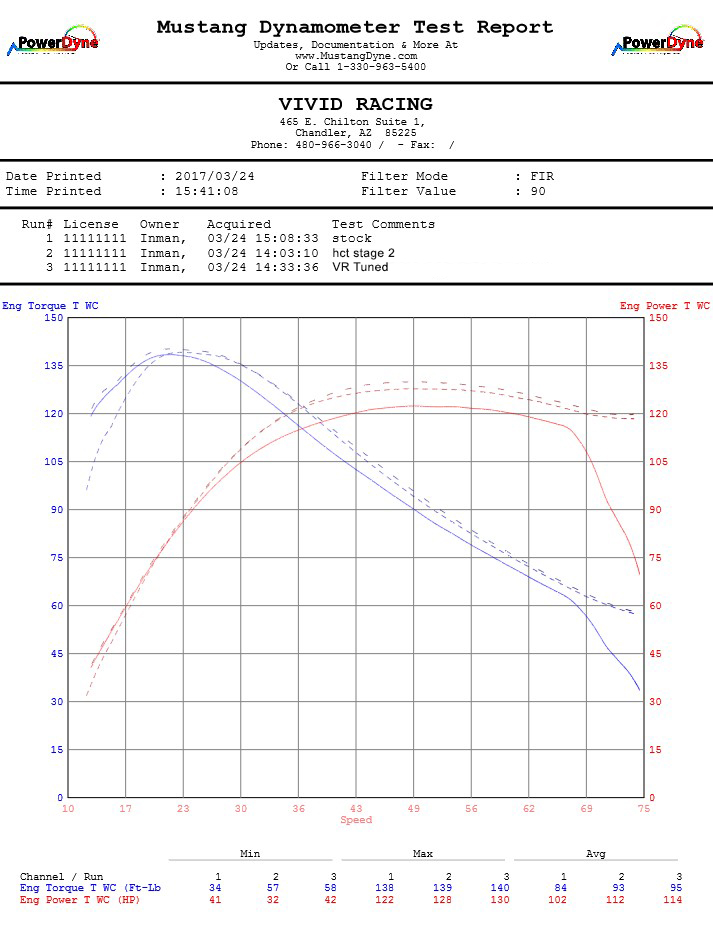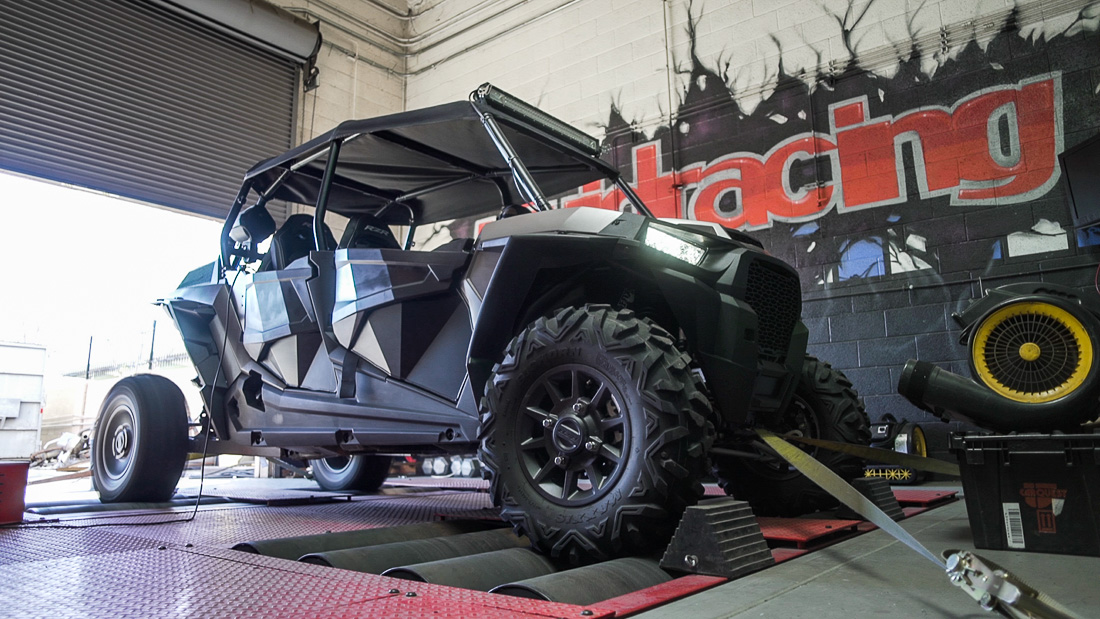Polaris RZR XP Turbo ECU Tuning is quite the hot topic right now. We recently did a couple articles talking about the tuning and comparing to the competition. One of the articles was about big injector tuning here and if it makes a difference on the 2017 like it does the 2016. The other article was about our intro into the RZR XP Turbo ECU Tuning on this 2017 car here. We did some real world testing and found a couple issues that we were not happy with. One issue was on our dyno tests. We ran our test up to 65 mph and then stopped the test. However at 68-70 mph, the car will act like it hit a wall or closed the throttle plate cutting off all power. The other issue we started to see was the 1127 overboost code when surpassing 18psi of boost. So we went back to the drawing board testing this 2017 RZR XP Turbo.
We kept all our variables the same and just changed our testing limits. We set the stop test at about 75mph on the dyno, which was actually around 83mph on the dash. The rpm limits were already raised to 9300 and the speed limiter (governor or vmax) was raised to 150kph (93mph). Now we could see on the dyno how the car would still hold boost pressure but fall on its face. We originally thought that this was a throttle plate closure. On some vehicles, the throttle plate will close as a safety mechanism to prevent the engine from detonating. Since the boost pressure was not dropping, this seemed like the logically answer. This was actually found to be another limiter in the mapping. With the limiter changed, the car would now pull all the way to the end of the test and not drop off.
The overboost 1127 code was another issue we kept encountering. Having Googled everything possible, watched all the un-informative videos, and read through the forums, there was only one possible answer… there is nothing you as an end user can do. 1127 overboost code was happening when the boost would peak over 18psi and then throw the vehicle into limp mode which rendered it useless over 35mph. With a upgraded Agency Power diverter valve, checking all the hardware, and finding no issues, there is zero reason to have this code come up. The boost was not related to the throttle plate closure or the limiter we were experiencing. The only way to rid yourself of the 1127 overboost code is with a ECU Tune. Changing some of the bytes in the file allowed us to get away from this issue. In addition, you can simply remove the DTC code in the file so that 1127 will never show up. Is this a bad or good thing? Well if you are gunning for the “who is faster among friends title”, you probably don’t care as you have all the mods, gauges, etc to get the job done. Technically you can run 21-22psi with race fuel and be ok. So when your vehicle is this modified, you don’t want the inconvenience of the 1127 overboost code coming on and ruining your weekend.
So with our new test on this 2017 RZR XP Turbo, we have a nice wheel horsepower gain over the stock file. This car was also equipped with a Flowmaster exhaust, STM Clutch Kit, and Agency Power diverter valve. You can see with the raised limits how it pulls strong till the end of the test. The AFR on this run was right in the sweet spot of 12.1 and peaking at 17.5 psi. Compared to the competition, we actually had a little extra on top. Overall, we can now put the 2017 Polaris RZR XP Turbo ECU Tuning to bed with a good completed file!
Order your VR Tuned ECU Flash for the Polaris RZR XP Turbo Here







